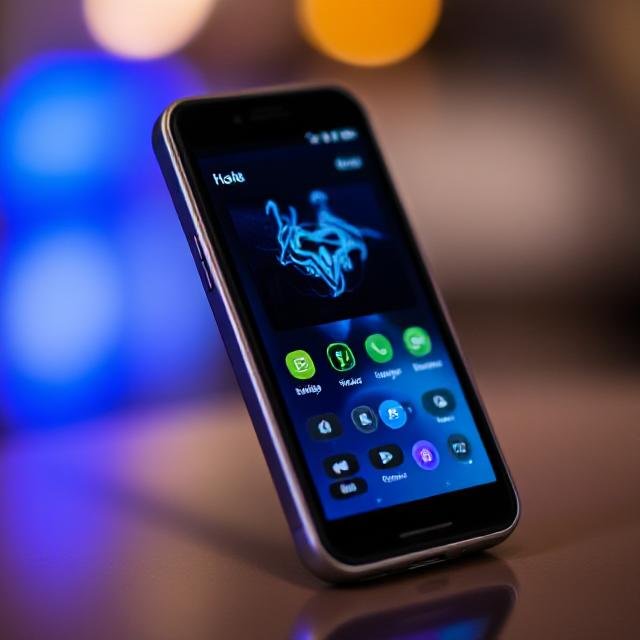The Hidden Risks of Recycling a Mobile Phone Number

The Hidden Risks of Recycling a Mobile Phone Number
Changing or recycling a mobile phone number is a common practice—whether you’re moving to a new area, switching carriers, or updating your contact information. However, failing to properly detach your old number from accounts and services can expose you to serious risks like identity theft, credit card fraud, and unauthorized access to sensitive data.
A 2021 Princeton University study highlighted the alarming prevalence of this issue. Researchers found that 66% of recycled mobile numbers —numbers made available by major service providers after being turned in by former owners—were still linked to active accounts on popular platforms like Amazon, PayPal, and other cloud-based services .
This means that when someone else receives your recycled number, they could potentially gain access to your accounts if those accounts still use the old number for verification or password recovery. This creates a significant security vulnerability, leaving your personal information and finances at risk.
How to Safely Change Your Phone Number for Online Accounts
Changing your phone number is a common task, but it requires careful attention to ensure your online accounts and personal information remain secure. With the average person managing 100 passwords across various platforms, it’s easy to overlook accounts tied to your old number. Here’s a step-by-step guide to help you update your phone number securely and avoid potential risks like identity theft or account compromise.
1. Update Your Phone Number Across All Online Accounts
Many online services use your phone number for password resets and two-factor authentication (2FA). If you don’t update this information, someone with your recycled number could intercept verification codes and gain unauthorized access.
- Start by visiting websites and cloud apps where your old number is registered.
- Update your phone number in the account settings section.
- Prioritize high-risk accounts like banking, email, and shopping platforms.
Pro Tip: Use a password manager to track all your accounts and ensure none are missed.
2. Change Your Number for Social Media Accounts
Social media accounts are particularly vulnerable because they’re often used to communicate with friends and family. If compromised, hackers can exploit your connections through phishing messages or scams.
- Update your phone number on platforms like Facebook, LinkedIn, Instagram, and Twitter .
- For apps like WhatsApp , which are directly tied to your number, follow their official process for changing your number. This ensures your chats and contacts remain secure.
3. Notify Service Providers That Contact You via Text
Text messaging has become a primary communication method for many businesses. Notifications like shipping updates, payment confirmations, or appointment reminders often go to your phone. If these messages end up with someone else, they could be used for identity theft.
Contact service providers that text or call you, such as:
- Utility companies
- Pharmacies
- Dentists or doctors’ offices
- Local retailers
- HVAC or plumbing companies
Update your contact information to ensure these communications reach your new number.
4. Double-Check Multi-Factor Authentication (MFA) Prompts
Multi-factor authentication (MFA) is a critical security feature, but it relies on your phone number to send verification codes. If your old number is still linked to MFA, a criminal could intercept these codes and breach your accounts.
- As you update your phone number, verify that MFA prompts are redirected to your new number.
- Consider switching to an authenticator app (e.g., Google Authenticator, Authy) or hardware security keys for added protection.
5. Review Your Text Message History for Forgotten Accounts
It’s easy to forget accounts you rarely use, like subscription services or annual orders. Scroll through your text message history to identify any overlooked accounts or providers.
Look for:
- Confirmation texts from retailers
- Subscription renewal notices
- Appointment reminders
Update your number with these services to close any remaining gaps.
6. Inform Friends, Family, and Colleagues About Your New Number
Once your accounts are secure, notify your contacts about your new number to avoid confusion.
- Send a text from your new number asking them to update their contacts.
- Request that they delete old messages containing your previous number to prevent accidental mix-ups in group chats or future conversations.
Why Is This Important?
Your phone number is more than just a way to make calls—it’s a key to your digital identity. Failing to update your number across all accounts and services can leave you vulnerable to:
- Identity theft: Criminals can use your old number to impersonate you.
- Account breaches: Hackers can intercept 2FA codes or reset passwords.
- Financial fraud: Access to sensitive information can lead to unauthorized transactions.
A 2021 Princeton study found that 66% of recycled numbers were still linked to active accounts, highlighting the widespread risk of neglecting this process.
Final Steps: Secure Your Mobile Device
With mobile devices increasingly targeted by malware and phishing attacks, it’s essential to ensure your device is properly protected:
- Install a reputable antivirus app.
- Enable encryption and secure backups.
- Regularly update your operating system and apps.
If you’re unsure about your device’s security, consider scheduling a mobile security check to safeguard your personal data and identity.
By taking these steps, you can confidently change your phone number while minimizing risks and ensuring your accounts remain secure.





